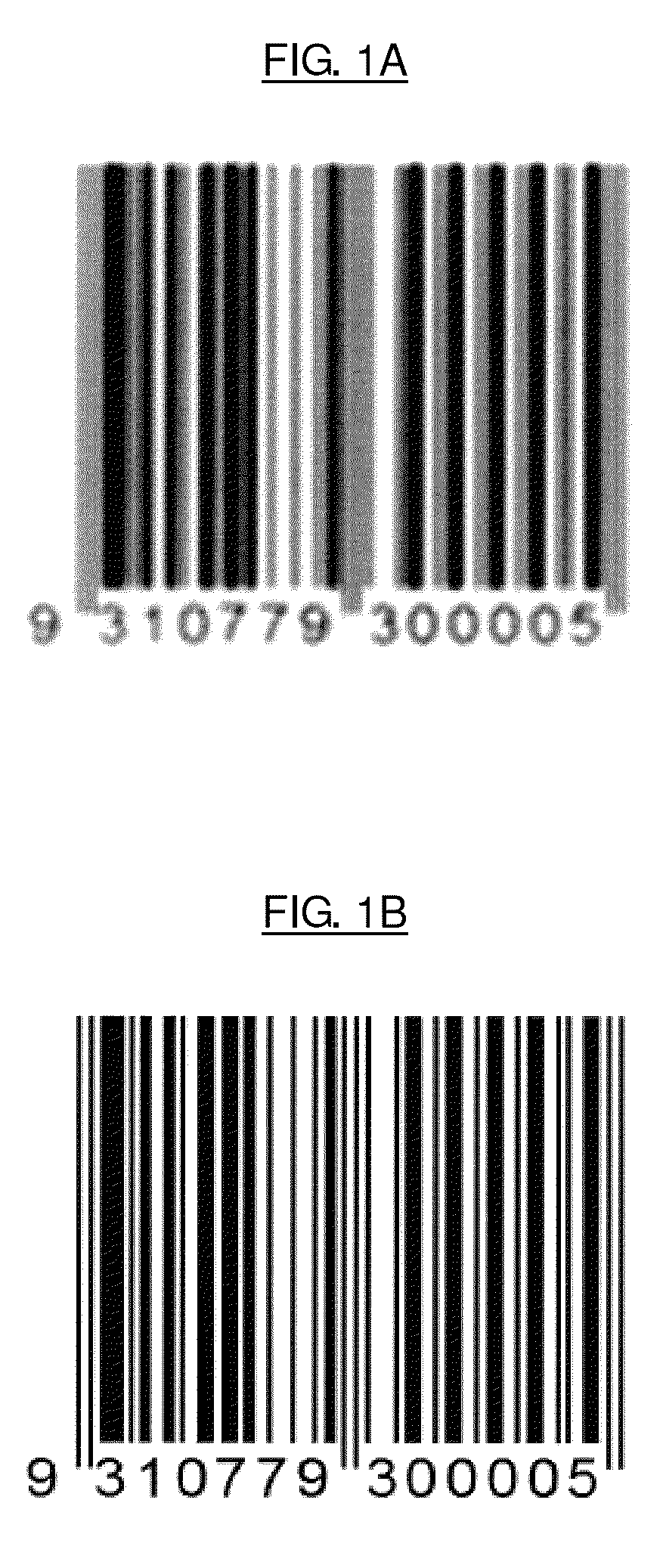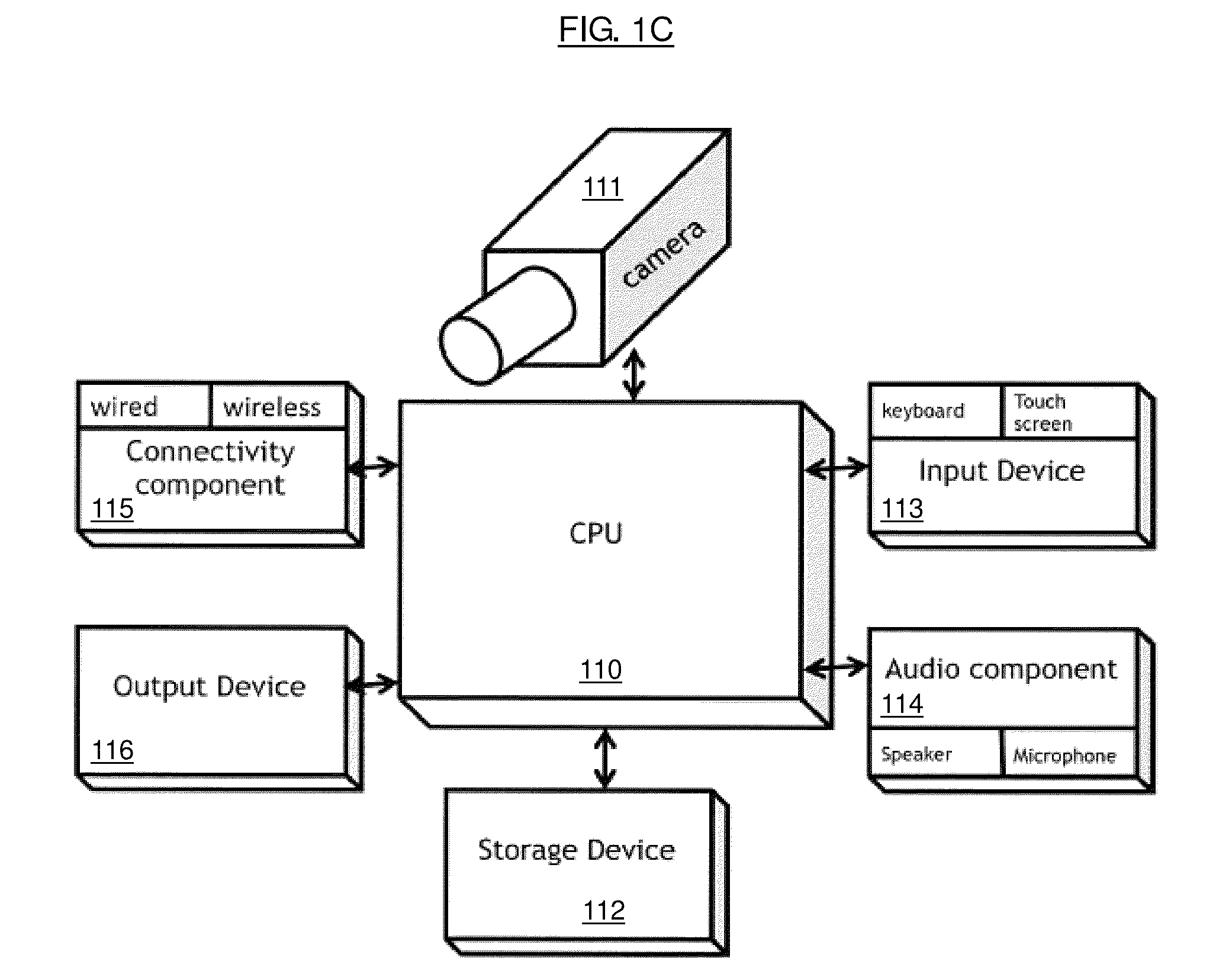Method for restoration of blurred barcode images
a barcode image and restoration technology, applied in image enhancement, instruments, sensing by electromagnetic radiation, etc., can solve the problems of limiting the decoding of barcodes, the solution proposed in the international patent application wo2011011051a2 is not adaptive with respect to decoding barcodes with varied geometries, and the process may be slower than the use of filtering, so as to improve quality, and remove the blurring
- Summary
- Abstract
- Description
- Claims
- Application Information
AI Technical Summary
Benefits of technology
Problems solved by technology
Method used
Image
Examples
Embodiment Construction
[0055]Reference will now be made in detail to the embodiments, examples of which are illustrated in the accompanying drawings, wherein like reference numerals refer to the like elements throughout. The embodiments are described below to explain the present invention by referring to the figures.
Description of Preferred Embodiments of the Invention
[0056]The system of the present invention is implemented using the methods developed for restoring images of barcodes damaged by the effect of blurring and decodes them from a portable digital camera equipped with low cost. With this, it is possible to develop a method to read barcodes in images captured by a camera with fixed focus, whose quality is impaired due to a possible incorrect focal length.
Problems Solved by the Invention
[0057]Despite technological advances, mobile devices still have hardware with relatively limited resources to implement algorithms that perform advanced calculations. Therefore, the present invention applies proces...
PUM
 Login to View More
Login to View More Abstract
Description
Claims
Application Information
 Login to View More
Login to View More - R&D
- Intellectual Property
- Life Sciences
- Materials
- Tech Scout
- Unparalleled Data Quality
- Higher Quality Content
- 60% Fewer Hallucinations
Browse by: Latest US Patents, China's latest patents, Technical Efficacy Thesaurus, Application Domain, Technology Topic, Popular Technical Reports.
© 2025 PatSnap. All rights reserved.Legal|Privacy policy|Modern Slavery Act Transparency Statement|Sitemap|About US| Contact US: help@patsnap.com



